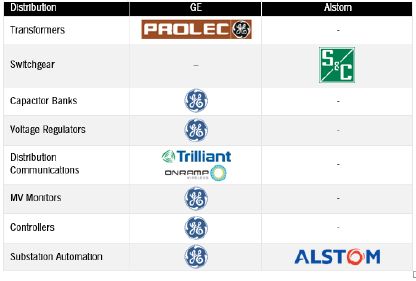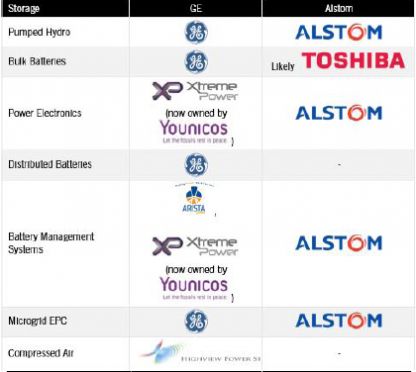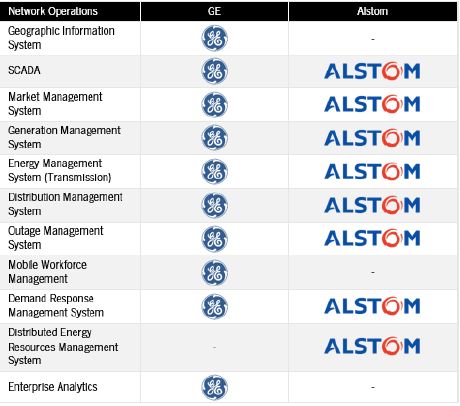General Electric’s proposed $13 billion takeover of Alstom (also called an "alliance") could create a supergroup of smart grid technology, if the marriage goes well. But like any giant corporate merger, there will be overlapping areas of expertise that need to be integrated or otherwise addressed if the whole is to be greater than the sum of its parts.
That’s true on the hardware side of things, where GE and Alstom have complementary and sometimes competing offerings in distribution automation, energy storage and microgrid products, as well as on the software side, where both companies provide platforms to control SCADA systems on the grid edge, manage distributed energy resources, and tie it all into back-end control and analysis.
Greentech Media’s Soft Grid 2014 conference, taking place next week in Menlo Park, Calif., is a good place to get acquainted with the acronyms (GIS, DMS, OMS, ADMS, DRMS, DERMS, etc.) that define this world. In the meantime, GTM Research’s latest executive briefing includes a handy set of charts that explain how GE and Alstom complement one another and overlap in ways that will need to be addressed.
On the equipment side, the companies have largely complementary portfolios, GTM Research notes. “GE’s distribution automation hardware only competes with Alstom in the substation, where geographical strengths limit overlap,” the report explains.

In the domain of energy storage, GE has a head start with its own battery technology and partnerships on the battery management system (BMS) front, although “Alstom would bring some currently outsourced capabilities under the GE umbrella.”

On the software side, however, “Software portfolios have significant overlap, creating questions about long-term support for various systems from each vendor,” the report notes.

GE has its software embedded throughout the utility industry and is making big investments in asset management, geographic information systems, advanced distribution grid controls and demand response management systems to tie it all together. It also has its GridIQ analytics platform, part of its broader industrial internet push to manage and analyze data from millions of distributed devices.
Alstom, for its part, has substation automation systems, distribution grid control technology, and asset management software. It also has partnerships with Cisco and Itron to network its substation systems via wireless IPv6 technology, and has demonstrated some impressive chops at integrating field equipment with open-standards-based technology through its work with Duke Energy’s “Coalition of the Willing.”
Just how a combined GE-Alstom grid software strategy will unfold given these overlaps is hard to predict. Come to Soft Grid 2014 to get some context on how the companies’ technologies fit into a broader competitive landscape, and where to expect the first moves toward integration with the broader worlds of big data and the “internet of things.”



